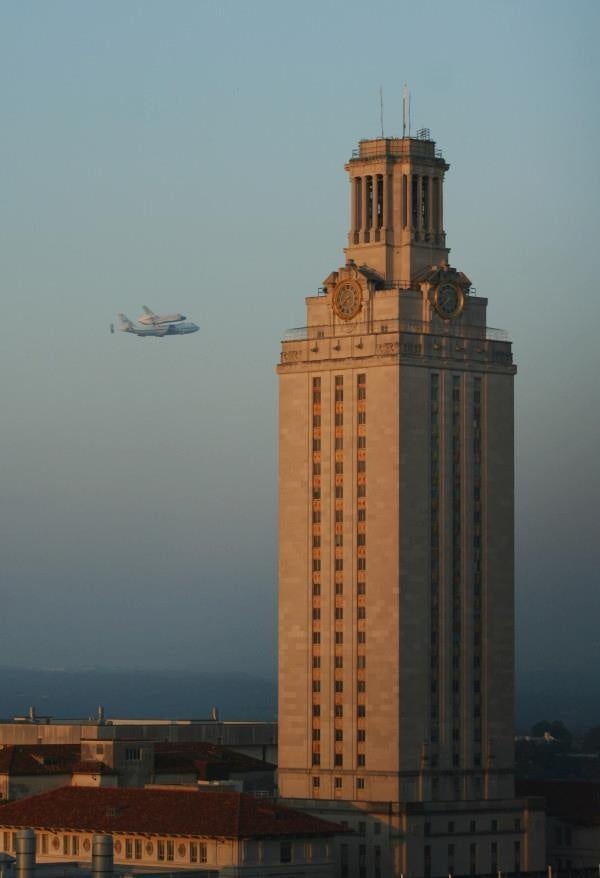 "ttyymmnn" (ttyymmnn)
"ttyymmnn" (ttyymmnn)
03/15/2016 at 12:35 • Filed to: Planelopnik, planelopnik history
 12
12
 11
11
 "ttyymmnn" (ttyymmnn)
"ttyymmnn" (ttyymmnn)
03/15/2016 at 12:35 • Filed to: Planelopnik, planelopnik history |  12 12
|  11 11 |
Welcome to This Date in Aviation History , getting you caught up on milestones, important historical events and personalities in aviation from March 12 through March 15
!!! UNKNOWN CONTENT TYPE !!!
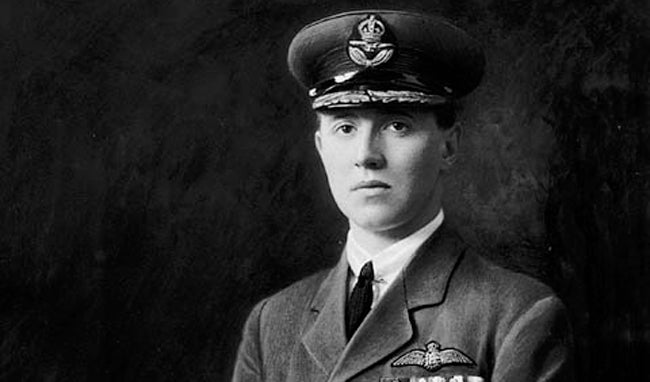
March 12, 1930 – The death of William George Barker. There is an old adage in the world of fighter pilots: “There are old fighter pilots, and there are bold fighter pilots. But there are no old, bold fighter pilots.” William Barker was the epitome of this adage, and for his service in WWI he became the most decorated serviceman in the history of Canada, as well as in the history of the British Empire and Commonwealth of Nations. Barker was born on November 3, 1894 in Dauphin, Manitoba, and though he wasn’t a highly skilled pilot (he made his first solo flight after only 55 minutes of dual instruction), and he suffered several incidents during his piloting career, he made up for his average flying skills with aggressiveness, audacity, and highly accurate marksmanship. Following a stint as an infantry machine gunner, Barker joined the Air Service, and between September 1917 and September 1918, he flew 404 operational hours, shooting down 46 aircraft and balloons. His personal !!!error: Indecipherable SUB-paragraph formatting!!! became the most successful fighter plane in the history of the Royal Flying Corps. Barker’s list of decorations includes the !!!error: Indecipherable SUB-paragraph formatting!!! and Bar, the !!!error: Indecipherable SUB-paragraph formatting!!! and two Bars, two !!!error: Indecipherable SUB-paragraph formatting!!! , and the French !!!error: Indecipherable SUB-paragraph formatting!!! . But he was awarded the !!!error: Indecipherable SUB-paragraph formatting!!! (roughly equivalent to the American !!!error: Indecipherable SUB-paragraph formatting!!! ), the highest decoration for valor “in the face of the enemy,” for his actions on Sunday, October 27, 1918. Returning to base and flying his !!!error: Indecipherable SUB-paragraph formatting!!! fighter, Barker crossed enemy lines near the Forêt de Mormal at 21,000 feet. After downing one enemy plane, he was attacked by a formation of !!!error: Indecipherable SUB-paragraph formatting!!! . By his own admission, he was being careless and failed to see the attackers. As the battle spiraled toward the ground, Barker found himself fighting 15 or more enemy planes. He was wounded three times in the legs, and his left elbow was blown off, but he still managed to control his fighter and dispatch three more enemy planes. Wounded and bleeding seriously, Barker crash landed behind Allied lines and was taken to a field dressing station by members of an RAF Kite Balloon Section. The fuselage of his Snipe was recovered and now resides at the !!!error: Indecipherable SUB-paragraph formatting!!! in Ottawa. After the war, Barker entered into an airplane business venture with fellow fighter ace and Victoria Cross recipient !!!error: Indecipherable SUB-paragraph formatting!!! . After three years, he returned to service with the Royal Canadian Air Force, serving until 1926 and, upon leaving the RCAF, Barker became the first president of the Toronto Maple Leafs. Despite these successes, Barker continued to struggle with both his war wounds and alcoholism. He died in 1930 after losing control of his !!!error: Indecipherable SUB-paragraph formatting!!! biplane during a demonstration flight. Barker was just 35. Bold, but certainly not old. (Photo via the !!!error: Indecipherable SUB-paragraph formatting!!! )
!!! UNKNOWN CONTENT TYPE !!!
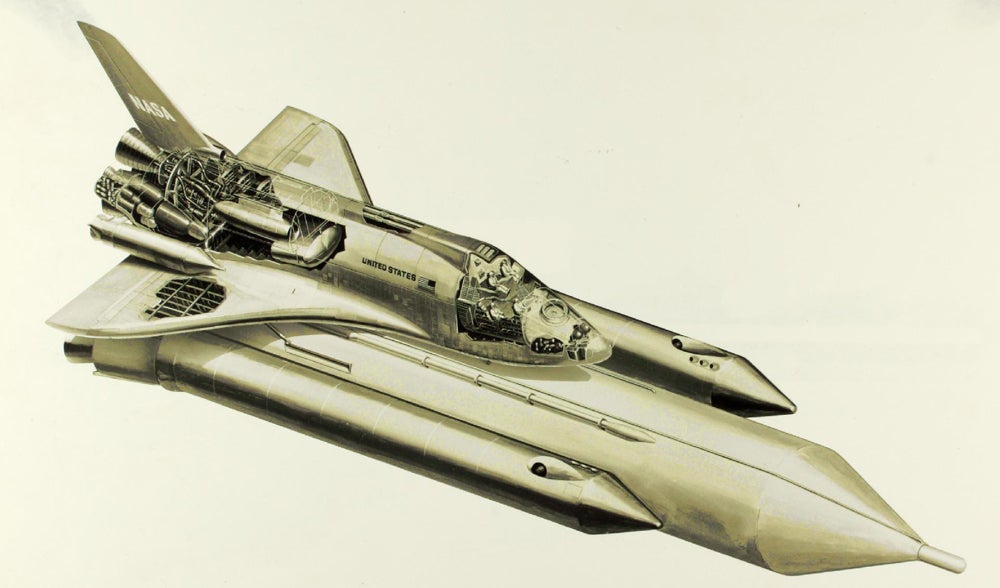
March 15, 1972 – NASA announces the final design of the Space Shuttle.
Even before the first astronaut set foot on the Moon, NASA was beginning to think about what shape future space travel would take. Throughout the manned space program from
!!!error: Indecipherable SUB-paragraph formatting!!!
to
!!!error: Indecipherable SUB-paragraph formatting!!!
to
!!!error: Indecipherable SUB-paragraph formatting!!!
, all parts of the launch system, from booster rockets to crew capsules, were expendable. As NASA started formulating the next generation of vehicles, they began to consider ways to make at least part of the system reusable. In 1969, President Richard Nixon formed the
!!!error: Indecipherable SUB-paragraph formatting!!!
to investigate and develop a new launch system and vehicle that would be less expensive than previous systems, and that could be used by NASA, the Department of Defense, and perhaps other commercial entities. But the biggest question that needed to be answered was just what form this new spacecraft, dubbed the Integrated Launch and Re-entry Vehicle (ILRV), would take. Initially, engineers envisioned a two-stage system that had the smaller vehicle, caller the orbiter, sitting atop a larger launch vehicle called a booster. The booster would also have wings and would also be manned. This arrangement would have launched vertically, and the booster would be flown back to Earth following separation. But unlike what we see today, the booster would essentially be a flying fuel tank, and both the orbiter and booster would require air-breathing jet engines to allow controlled flight for landing. But like so many other aspects of the post-Apollo space effort, economics played a major role, and NASA simply didn’t have the money to pursue such a complex system, along with the space station that the new orbiter was meant to service. Since the original concept would only lift about 25,000 pounds of payload into orbit, and the US Air Force, whose budget was vital to the program, wanted a payload of 65,000 pounds for launching military satellites, NASA had to go back to the drawing board. And not only did they have to redesign the Shuttle, they had to rethink the entire space station concept. Initial plans were for the station to be a large, single unit like Skylab. But changing the concept of the space station to one of modular construction allowed NASA to reimagine the Shuttle as a vehicle that would carry those modules into orbit, and also provide the payload space the Air Force required. Two basic design concepts then emerged. The first was called parallel burn, where the Shuttle’s engine would be ignited at launch and burn in tandem with solid rocket boosters. The second was called series burn, where the Shuttle’s engines would not fire until after the booster rockets were finished. After careful analysis of the cost of both systems, NASA opted for the parallel burn, and announced on March 15, 1972 that the final design would be essentially what we see today: an orbiter attached to a
!!!error: Indecipherable SUB-paragraph formatting!!!
(ET) and lifted by two
!!!error: Indecipherable SUB-paragraph formatting!!!
(SRBs). Of those three elements, the SRBs would separate from the fuel tank and parachute back to Earth to be reused, while the center fuel tank would break up before hitting the Indian Ocean. The idea of using turbine engines to control landing, and even fly the Shuttle from point to point, was eventually scrapped, and the Shuttle would glide unpowered back to Earth. On July 25, 1972, NASA award the International Space Division of Rockwell to develop and manufacture the orbiter, as well as manage overall integration of the vehicle and the launch system. Ultimately, a total of 5 operational shuttles were built (the prototype
Enterprise
never went to space and was used primarily for free-flight testing), with two orbiters lost to accidents. Together, they completed 133 missions during their 30 years of service.
(Illustration via
!!!error: Indecipherable SUB-paragraph formatting!!!
)
!!! UNKNOWN CONTENT TYPE !!!
Short Take Off
!!! UNKNOWN CONTENT TYPE !!!
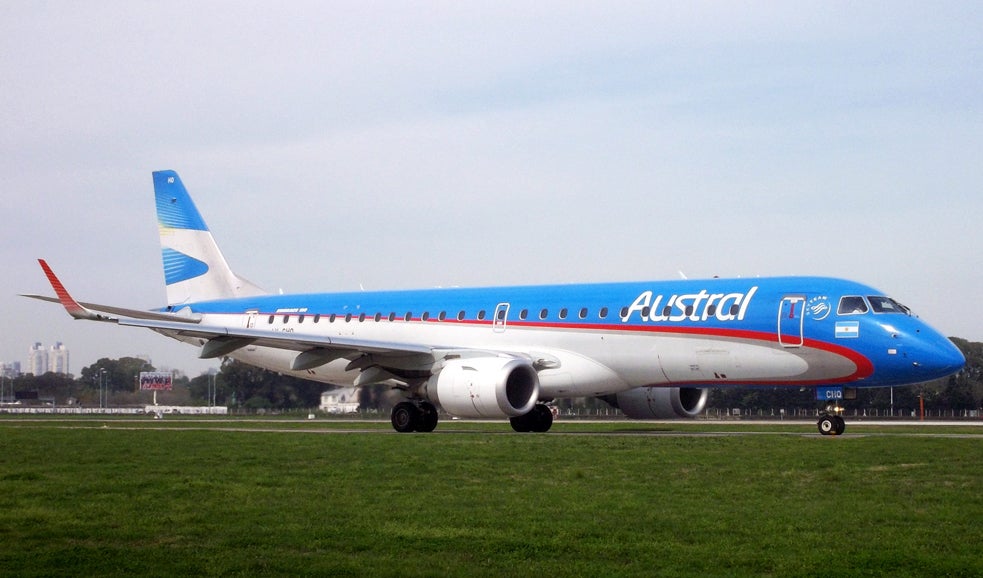
March 12, 2004 – The first flight of the Embraer ERJ-190, a member of the E-Jet family of medium-range airliners produced by the Brazilian aerospace conglomerate !!!error: Indecipherable SUB-paragraph formatting!!! . The E190 was the first stretched variant of the original E170, and features a larger wing and stabilizer, plus new !!!error: Indecipherable SUB-paragraph formatting!!! turbofan engines. With accommodation for 100 passengers in a typical two-class configuration, the E190, and slightly larger E195, are positioned to compete with the !!!error: Indecipherable SUB-paragraph formatting!!! and !!!error: Indecipherable SUB-paragraph formatting!!! , the !!!error: Indecipherable SUB-paragraph formatting!!! and !!!error: Indecipherable SUB-paragraph formatting!!! , and the !!!error: Indecipherable SUB-paragraph formatting!!! . A total of 523 E190s had been delivered by the end of 2015, with 55 more firm orders awaiting fulfillment. (Photo by Matias 18 via !!!error: Indecipherable SUB-paragraph formatting!!! )
!!! UNKNOWN CONTENT TYPE !!!
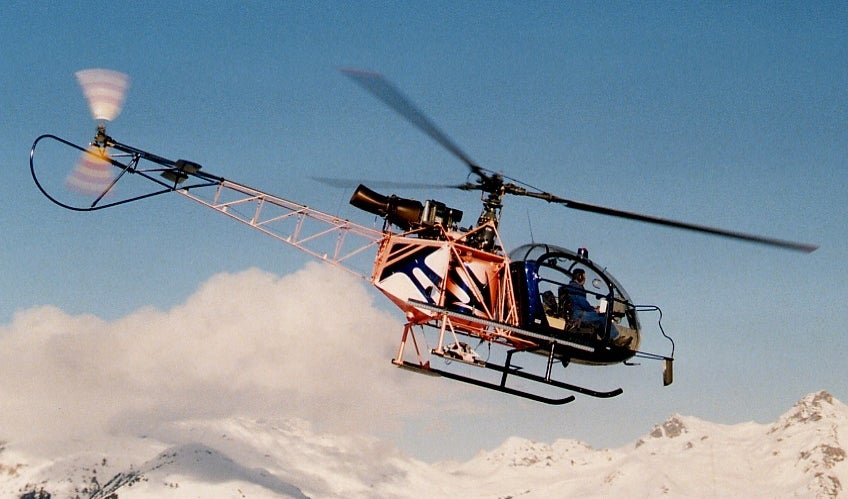
March 12, 1955 – The first flight of the Aérospatiale Alouette II, a light observation, liaison, reconnaissance and air-sea rescue helicopter originally manufactured by !!!error: Indecipherable SUB-paragraph formatting!!! . The Alouette was the first helicopter to make use of a gas turbine engine rather than a heavier piston engine, and in addition to its civilian duties, the Alouette II was also converted to a gunship carrying anti-tank missiles and torpedoes. The Alouette II showed its worth in 1956 when it performed the first mountain rescue of a stricken climber from more than 4,000 meters of elevation. The Alouette II was widely exported, and by the end of production in 1975 over 1,300 aircraft had been built. (Photo by Elisabeth Klimesch via !!!error: Indecipherable SUB-paragraph formatting!!! )
!!! UNKNOWN CONTENT TYPE !!!
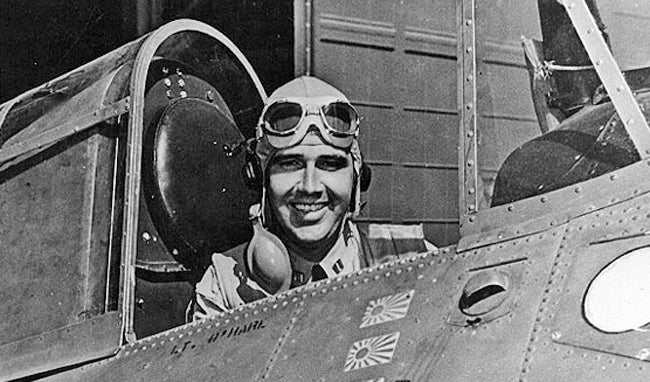
March 13, 1914 – The birth of Edward Henry “Butch” O’Hare, a US Navy fighter pilot during WWII and the Navy’s first flying ace. On February 20, 1942, O’Hare found himself alone in his !!!error: Indecipherable SUB-paragraph formatting!!! facing 9 Japanese bombers attacking his carrier. With limited ammunition, O’Hare destroyed 5 of the bombers and damaged a sixth. For his actions, O’Hare was awarded the !!!error: Indecipherable SUB-paragraph formatting!!! , which recognized his actions as “one of the most daring, if not the most daring, single action in the history of combat aviation.” O’Hare was killed in action on November 26, 1943 while leading a nighttime fighter attack, the first ever launched from a carrier. During the attack, his !!!error: Indecipherable SUB-paragraph formatting!!! was shot down and the aircraft was never found. The Navy destroyer !!!error: Indecipherable SUB-paragraph formatting!!! (DD-889) was named in his honor, as was Chicago’s !!!error: Indecipherable SUB-paragraph formatting!!! . (US Navy photo)
!!! UNKNOWN CONTENT TYPE !!!
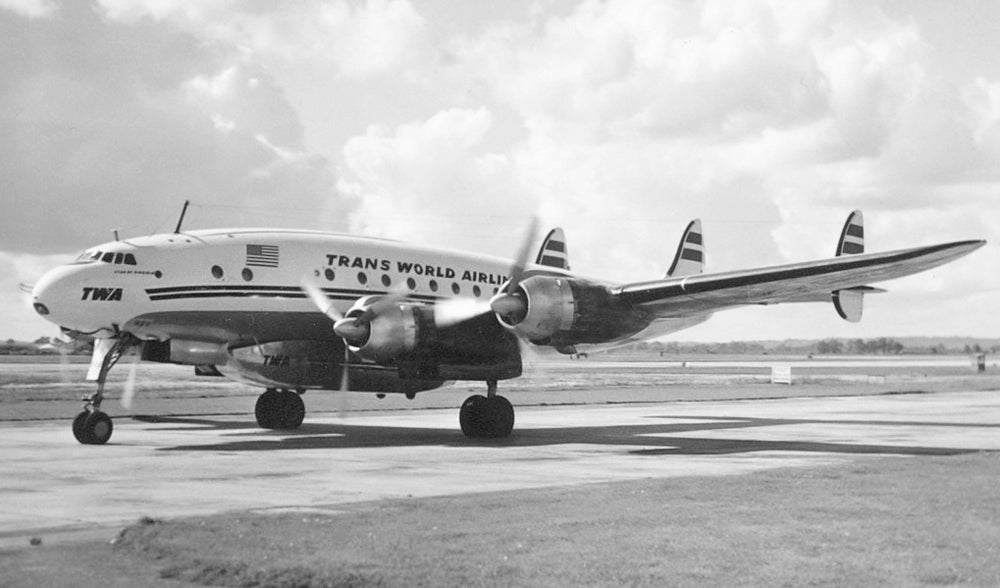
March 14, 1947 – The first flight of the Lockheed L-749 Constellation, an improved version of the !!!error: Indecipherable SUB-paragraph formatting!!! . The Constellation originally entered service with the US Army Air Forces in WWII, but following the war, the “Connie” became one of the great intercontinental airliners. The introduction of the L-749 provided increased range, plus the addition of !!!error: Indecipherable SUB-paragraph formatting!!! exhaust manifolds that increased speed. Further development yielded the L-749A in 1949, which featured a strengthened fuselage and more robust landing gear. The first L-749 was delivered to Pan Am on April 18, 1947, and ultimately 119 L-749s were produced between 1947-1951 before the introduction of the !!!error: Indecipherable SUB-paragraph formatting!!! . (Photo by RuthAS via !!!error: Indecipherable SUB-paragraph formatting!!! )
!!! UNKNOWN CONTENT TYPE !!!
Recent Aviation History Posts
!!! UNKNOWN CONTENT TYPE !!!
!!! UNKNOWN CONTENT TYPE !!!
!!! UNKNOWN CONTENT TYPE !!!
!!! UNKNOWN CONTENT TYPE !!!
!!! UNKNOWN CONTENT TYPE !!!
If you enjoy these Aviation History posts, please let me know in the comments. And if you missed any of the past articles, you can find them all at
!!!error: Indecipherable SUB-paragraph formatting!!!
.
!!! UNKNOWN CONTENT TYPE !!!
 Jonathan Harper
> ttyymmnn
Jonathan Harper
> ttyymmnn
03/15/2016 at 13:47 |
|
Fascinating as always. Thanks!
 ttyymmnn
> Jonathan Harper
ttyymmnn
> Jonathan Harper
03/15/2016 at 13:58 |
|
Thank you!
 facw
> ttyymmnn
facw
> ttyymmnn
03/15/2016 at 14:24 |
|
Ultimately, a total of 5 shuttles were built
Fine be mean to Enterprise ...
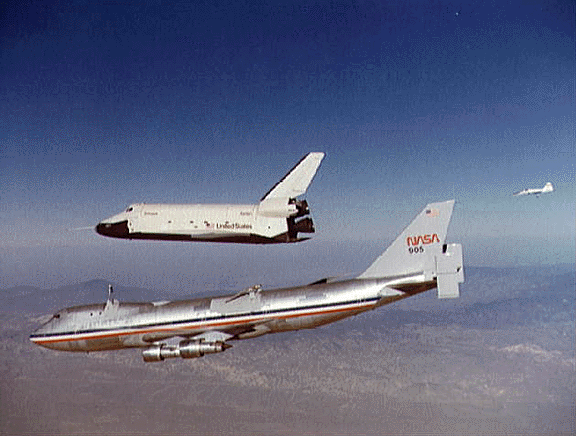
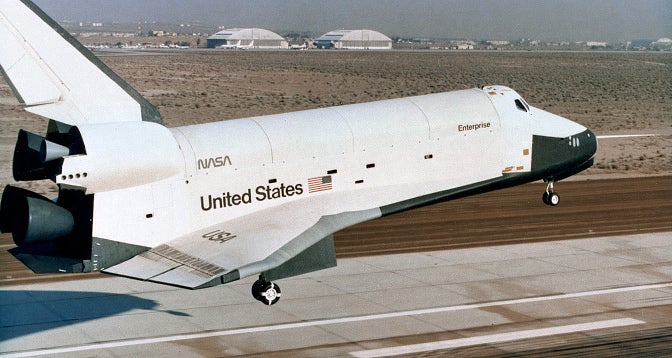
 ttyymmnn
> facw
ttyymmnn
> facw
03/15/2016 at 14:27 |
|
Point taken.
 ttyymmnn
> facw
ttyymmnn
> facw
03/15/2016 at 14:30 |
|
I fixed it.
 RallyWrench
> ttyymmnn
RallyWrench
> ttyymmnn
03/15/2016 at 14:35 |
|
Highly informative, as usual. Kinja won’t let me star it, but I tried.
 ttyymmnn
> RallyWrench
ttyymmnn
> RallyWrench
03/15/2016 at 14:36 |
|
Thanks. Kinja is Kinja-ing for me right now too.
 facw
> ttyymmnn
facw
> ttyymmnn
03/15/2016 at 14:36 |
|
Yay!
 ttyymmnn
> facw
ttyymmnn
> facw
03/15/2016 at 14:44 |
|
Corrections and more information are always welcome. I write these and proof them, but there is a lot of information that I either have no room for or overlook. Thanks.
 facw
> ttyymmnn
facw
> ttyymmnn
03/15/2016 at 14:50 |
|
Thanks. I have a soft spot for Enterprise because it flew over my preschool on the carrier aircraft when I was a kid (flying into Dulles after it was retired).
 ttyymmnn
> facw
ttyymmnn
> facw
03/15/2016 at 14:55 |
|
I used to live in Houston back in the 90s, and I once saw one of the Shuttles on top of the SCA flying alongside the interstate. I have no idea which one, or where it was going, but obviously, there is a huge NASA presence in Houston (thanks, LBJ). When they retired the fleet, one of the Shuttles with SCA did a flyby of downtown Austin. I had no idea it was coming, and had I known, I would have kept my kids out of school to go see it.
